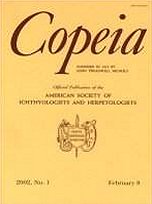The enigmatic biogeography of Pacific island boas of the genus Candoia is examined using DNA sequence variation from a portion of the mitochondrial cytochrome b gene. Estimates of the phylogenetic relationships and genetic distances between Candoia and the Old World (Sanzinia) and New World boids (Boa, Corallus, and Epicrates) suggest that a recent dispersal event from the Americas is not responsible for Candoia's Papuan distribution. Multiple populations from the three Candoia species are sampled to distinguish whether substantial evolutionary partitions exist within species as a result of colonization patterns or geographical barriers and to assess whether genetic partitions are concordant with species boundaries. In all analyses, Candoia and the Madagascan Sanzinia are sister taxa, and C. bibroni is basal to C. aspera and C. carinata. Mean sequence divergences between Candoia and the other boid genera Sanzinia, Corallus, Epicrates, and Boa are 0.19, 0.23, 0.24, and 0.25, respectively. Within Candoia, mean interspecific sequence divergence ranges from 0.13, between C. aspera and C. bibroni, to 0.16 for both C. aspera/C. carinata and C. bibroni/C. carinata pairwise comparisons. Large intraspecific sequence divergence (up to 0.13 within C. carinata) exists within Candoia species demonstrating deep separations corresponding to patterns of island colonization and geographic barriers in New Guinea.
How to translate text using browser tools
1 May 2000
Molecular Phylogeny and Historical Biogeography of Pacific Island Boas (Candoia)
Christopher C. Austin
ACCESS THE FULL ARTICLE





